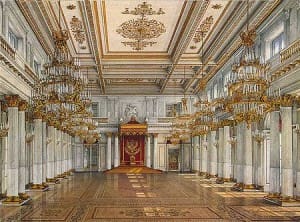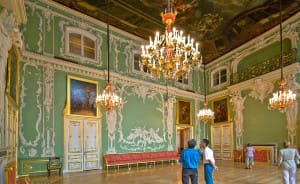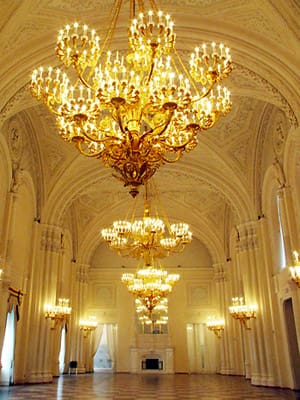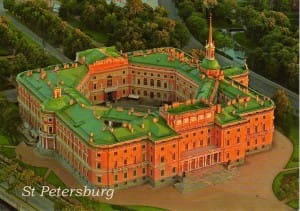
Palace construction in St. Petersburg, Russia all started with Peter the Great building the first imperial residence there in 1708. It was actually a wooden house on the site of the future Winter Palace, but was soon reconstructed in stone and continually revised over the next 150 years. The incomparable splendor of the Winter Palace was inspiration for other St. Petersburg aristocracy to build opulent palaces. Within a century, St. Petersburg had many staggeringly lavish residences for the privileged elite of the nation.
Most of St. Petersburg’s palaces were extensively damaged during the October Revolution of World War I and the Siege of Leningrad during WWII. Late 20th century restoration projects have reinstated many of the palaces to their former imperial glory. Today many of the palaces are used by government organizations as educational facilities, museums and concert venues that are open to the public.
The palaces of St. Petersburg offer a glimpse of Russia’s extravagant imperial past

The Winter Palace – The 1,057 room palace is the most famous building of St. Petersburg and a must-see for visitors. For nearly three centuries it has played a central role in the politics, revolution and culture of Russia. A tour the State Rooms and beyond is to behold the nearly unfathomable extravagance of the Romanov Tsars. The Winter Palace is at the core of the State Hermitage Museum, which is a complex of buildings housing one of the finest collections of Western paintings in the world, imperial furnishings and the incredibly ornate carriage of Peter the Great’s wife. The Hermitage only exhibits a small portion of the 3 million piece collection, yet it is so vast it would take days or even weeks to see it all. Travel Maestro tip: The first Thursday of the month is free admission, but very crowded.

The Stroganov Palace – Built in 1754, the exterior is one of the oldest and most impressive examples of late Baroque in St. Petersburg. Intensive restoration of the neoclassical interior has taken place since ownership was passed to the State Russian Museum. Many of its rooms are now open to the public, including the amazingly lavish Mineral Study and the Picture Gallery.

The Marble Palace – This striking palace, built in 1768 by Catherine the Great, is so named because it contains 32 different types of marble on the exterior and interior of the neoclassical masterpiece. 75 years later, an heir had the interior remodeled, stripping all of the marble with the exception of the Marble Hall and Grand Staircase, in favor of gothic and renaissance styling. The building is now under the care of the State Russian Museum who oversees ongoing restoration and houses a permanent collection of modern art as well as many temporary exhibits in the palace.

The Mikhailovskiy Castle – The most unusual St. Petersburg palace is a medieval-style fortress surrounded by water and accessible only by drawbridge, built by Emperor Paul I in 1801. It is a square building with each of the four facades in a different architectural style and an octagonal courtyard in the center. The paranoid leader intended for the palace to be his protection, although he was assassinated in his bedroom a mere 40 days after moving in. Today it houses the State Russian Museum’s portrait collection.
At least a dozen other palaces in St. Petersburg have been restored from significant war damage and are open to the public. Visitors can also get a glimpse of Russia’s imperial past in the “Palace Suburbs” about 45 minutes out of St. Petersburg. The czarist estates of Peterhof, Gatchina, Tsarskoye Tselo (Pushkin) and Pavlovsk have landscaped grounds and parks and exquisitely restored residences.
To plan a palace tour of St. Petersburg, let Covington Travel’s knowledgeable vacation advisors help you with all the details.






Leave a Reply